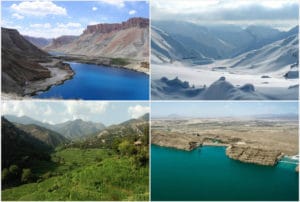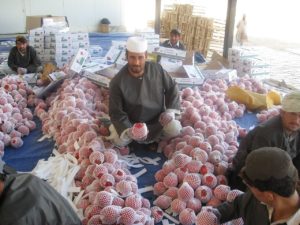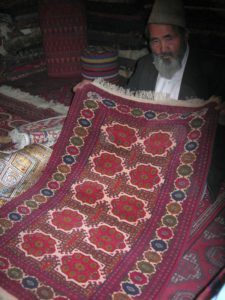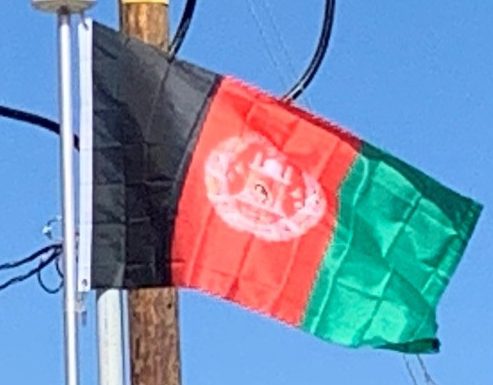Despite having numerous rivers and reservoirs, large parts of the country are dry. The endorheic Sistan Basin is one of the driest regions in the world. Aside from the usual rainfall, Afghanistan receives snow during the winter in the Hindu Kush and Pamir Mountains, and the melting snow in the spring season enters the rivers, lakes, and streams. However, two-thirds of the country’s water flows into the neighboring countries of Iran, Pakistan, and Turkmenistan.

The northeastern Hindu Kush mountain range, in and around the Badakhshan Province of Afghanistan, is in a geologically active area where earthquakes may occur almost every year.
The country’s natural resources include: coal, copper, iron ore, lithium, uranium, rare earth elements, chromite, gold, zinc, talc, barite, sulfur, lead, marble, precious and semi-precious stones, natural gas, and petroleum, among other things. In 2010, US and Afghan government officials estimated that untapped mineral deposits located in 2007 by the US Geological Survey are worth at least $1 trillion.
Economy:
Overview:
Afghanistan’s GDP is around $64 billion with an exchange rate of $18.4 billion, and its GDP per capita is $2,000. Despite having $1 trillion or more in mineral deposits, it remains as one of the least developed countries. The country imports over $6 billion worth of goods but exports only $658 million, mainly fruits and nuts. It has less than $1.5 billion in external debt.
Agricultural production is the backbone of Afghanistan’s economy. The country is known for producing some of the finest pomegranates, grapes, apricots, melons, and several other fresh and dry fruits.

It is also known as the world’s largest producer of opium. Sources indicate that as much as 11% or more of the nation’s economy is derived from the cultivation and sale of opium.
While the nation’s current account deficit is largely financed with donor money, only a small portion is provided directly to the government budget. The rest is provided to non-budgetary expenditure and donor-designated projects through the United Nations system and non-governmental organizations. The Afghan Ministry of Finance is focusing on improved revenue collection and public sector expenditure discipline.

The Afghanistan Bank serves as the central bank of the nation and the “Afghani” (AFN) is the national currency, with an exchange rate of about 60 Afghanis to 1 US dollar. A number of local and foreign banks operate in the country, including the Afghanistan International Bank, New Kabul Bank, Azizi Bank, Pashtany Bank, Standard Chartered Bank, and the First Micro Finance Bank.
One of the main drivers for the current economic recovery is the return of over 5 million expatriates, who brought with them fresh energy, entrepreneurship and wealth-creating skills as well as much needed funds to start up businesses. Many Afghans are now involved in construction, which is one of the largest industries in the country. Some of the major national construction projects include the $35 billion New Kabul City next to the capital, the Aino Mena project in Kandahar, and the Ghazi Amanullah Khan Town near Jalalabad. Similar development projects have also begun in Herat, Mazar-e-Sharif, and other cities. An estimated 400,000 people enter the labor market each year.
